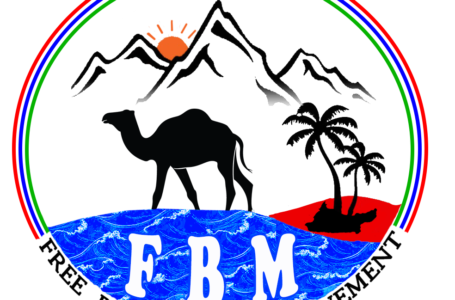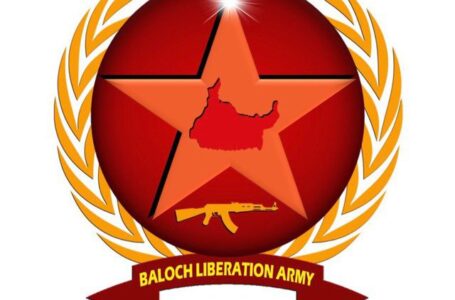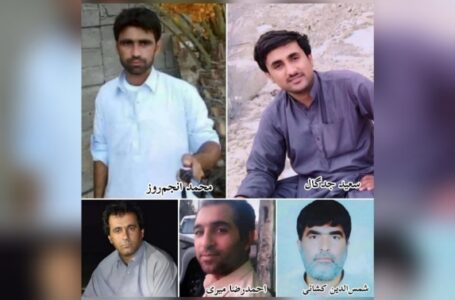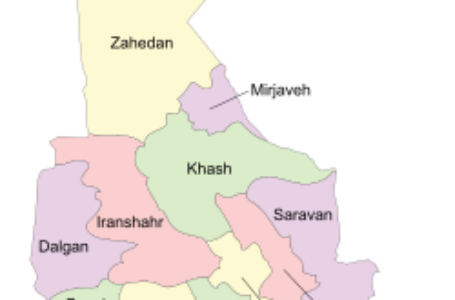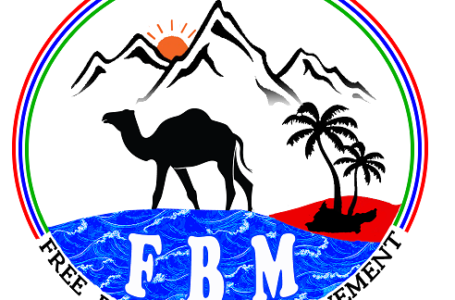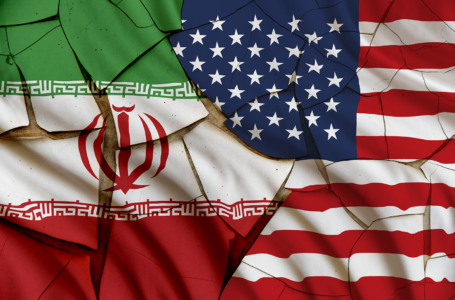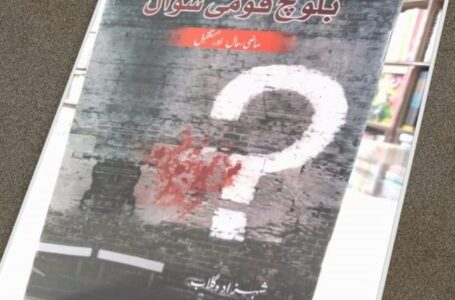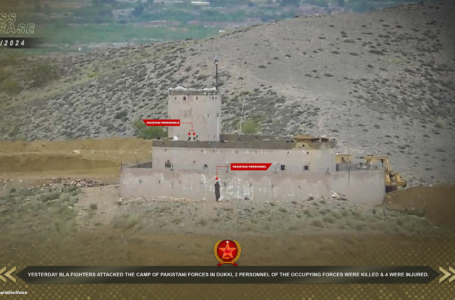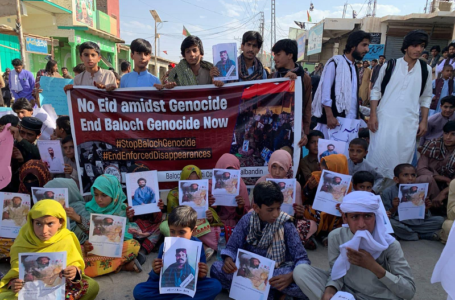Foreign countries should refrain from becoming Pakistan’s partner in Baloch Genocide: FBM
Baloch are struggling to regain their independence: Nobat Marri

The Balochwarna News has spoken with Nobat Marri the former head of the Free Balochistan Movement (FBM) Information Department and a member of FBM. In the following interview, Nobat Marri talks about the historical and strategic importance of Balochistan and the Baloch struggle for their freedom. He highlights the ongoing human rights violations in both Iranian and Pakistan Occupied Balochistan and the role of Baloch women in the liberation struggle.
1. Can you introduce yourself? Name, backstory and your role with the Free Balochistan Movement?
My name is Nobat Marri, I am a Baloch from Balochistan. I was born in Helmand Lashkargah in 1982, where my parents, along with thousands of Marri Baloch tribe members, took refuge during the 1973 military offensives and aggression in areas in Pakistan-occupied Balochistan. Pakistan and Iran bombed Marri areas, including Kohlu, Kahan, Chamalang, and other adjoining areas, killing thousands of Marri Baloch and destroying crops while looting livestock from our people. This forced our people to seek refuge in Helmand under the leadership of the late Nawab Khair Baksh Marri, the father of the Free Balochistan Movement’s founder Hyrbyair Marri.
In 1992, when the Mujahideen took over Afghanistan, they began targeting our people at the behest of Pakistani Intelligence services, compelling us to leave Helmand. Under the leadership of the late Nawab Khair Baksh Marri and Hyrbyair Marri, the Marri tribe returned to Balochistan. The new phase of Baloch national struggle against Pakistani occupation began upon their return but gained momentum after 1997. It came to public attention when Hyrbyair Marri, after winning elections in Balochistan, openly refused to take the oath of allegiance in Parliament to Pakistan. This development shook the Pakistani power structure and brought joy to the Baloch youth who had been disheartened by Pakistani propaganda claiming that the Baloch movement for independence had died down after Nawab Khair Baksh Marri’s return.
In January 2000, Pakistani forces surrounded the area of New Kahan, the western part of Quetta city, where members of our Marri tribe are residing. After their return to Balochistan, hundreds of our people were arrested on fabricated charges, including Nawab Khair Baksh Marri. Among them, my two brothers were also arrested and tortured. I heard their stories about how Pakistani forces tortured and questioned them about Nawab Khair Baksh Marri, Hyrbyair Marri, and the resistance movement. In 2000, this new phase of repression by occupying forces against our people and the Baloch resistance against Pakistani occupation came to the surface, escalating and spreading throughout Balochistan.
As for how I became part of this struggle. When we returned to Pakistani-occupied Balochistan from Helmand, I was 10 years old and already inspired by the Baloch struggle for liberation and Nawab Khair Baksh Marri and Hyrbyair Marri’s vision. In my family, I would always hear stories of Pakistani oppression and past Baloch resistance. Along with the youth from New Kahan, I often visited Hyrbyair Marri’s office in 1997-1998 to hear his views. This is the story of how I became part of this movement and served as the head of the Information Department in the Free Balochistan Movement until January 2024.
2. Can you give us a bit of the history, and the goals of the Free Balochistan Movement? What are they trying to achieve? When and why was it founded? Where do they operate?
The Baloch nation has been living in the Iranian plateau for thousands of years, they formed different kinds of pre-modern states and confederacy after the fall of Arab Islamic dynasties in our region. However, Balochistan’s unified political system, where all Baloch areas came under one rule, is mostly attributed to the Khanate of Kalat’s rule, where a Baloch dynasty from Kalat, Balochistan, unified the entire Baloch homeland under a single political rule around the 17th century. Due to Balochistan’s strategic location, the Baloch nation has been resisting foreign occupiers for the last several centuries, we resisted the Mongols, the Portuguese and then the British Empire.
On the 13th of November 1839, the British Empire invaded the sovereign state of Balochistan. It was through their ‘Divide and Rule’ policy that Britain drew the first line called the Goldsmid line, dividing Balochistan into two parts, East and West. The western part of Balochistan was given to the Qajar dynasty of Persia and a second line was drawn in 1871 called the Durand line which divided Balochistan and Afghanistan simultaneously. Balochistan’s northern parts, such as Helmand and Nimroz, were given to Afghanistan and also Afghan territories were merged into Balochistan and British India, then called British Balochistan.
Due to the resistance of the Baloch in the western part of the nation, against the Iranian occupation, the British Empire recognised Baloch authority over the western areas of Balochistan in 1916. However, due to a lack of foreign support, the newly modernised army of Reza Shah Pahlavi succeeded in recapturing Balochistan’s western territory in 1928.
The Baloch have never ceased resisting the occupiers and on the 11th of August 1947, after the British departure from the Eastern part of Balochistan, Balochistan regained its independence and was recognised by the British as an independent state. However, this time the sovereignty of Balochistan was short-lived, as after nine months the British colluded with Pakistan and supported the Pakistani invasion of Balochistan. Pakistan invaded Balochistan on 27th March 1948 and arrested Balochistan’s ruler Ahmed Yar Khan.
In 1948 Agha Abdul Karim Khan, the governor of Makuran Province and the brother of Balochistan’s ruler Ahmed Yar Khan, took up arms and resisted Pakistani occupation. He was deceived in the name of negotiations and imprisoned.
The resistance continued in phases against Pakistan’s occupation in 1955, then in 1965 and again in 1973, but due to a lack of international support for the Baloch, Pakistan suppressed all resistance with brutal military might.
The present Phase of resistance is the fifth phase and the longest in history against Pakistan’s occupation.
The foundation and preparation for this phase started in the 1990s, when Nawab Khair Baksh Marri flew to Helmand from Kabul and Hyrbyair Marri finished his studies in Russia and returned to Helmand, where our Marri tribe was residing. Hyrbyair Marri made a team of youth. He headed them and went to Pakistani-occupied Balochistan clandestinely, to re-organise the movement for liberation and set up resistance camps.
3. What are the main problems Baloch people face? How do you think they can be solved?
The Baloch nation is facing severe challenges, particularly in the regions occupied by Iran and Pakistan, where our people experience ongoing human rights abuse and cultural suppression.
In Iranian-occupied Balochistan, Baloch people are being hanged, killed and massacred. Last year, within the space of a few minutes, Iranian forces murdered more than 120 people in the Zahedan Massacre, peaceful protesters demonstrating against Iranian injustices. Balochs are also subjected to a form of cultural genocide. The Baloch are denied the right to name their newborns with Balochi names, and the education system does not allow the Balochi language to be taught in schools. This cultural suppression is a significant issue in Iranian-occupied Balochistan.
In Pakistani-occupied Balochistan, the situation is comparable but with a focus on the aggressive exploitation of Baloch mineral wealth and the suppression of Baloch voices through military force. Pakistan has utilised military aid received during the US invasion of Afghanistan in 2001 against the Baloch people, using advanced weaponry, including F-16s and gunship helicopters. The Pakistani military has carried out operations with impunity, leading to enforced disappearances, extrajudicial murders, and multiple mass graves discovered in Khuzdar in January 2014. Now, the Chinese are involved with Pakistanis to oppress the Baloch nation. In an attempt to further their ‘Belt and Road’ initiative, to take over Gwadar deep-sea port.
Demographic change in the occupied territories is another big problem Baloch are facing where Pakistan and Iran both have been settling Punjabis and Persians in their respective occupied territories to marginalise and turn the Baloch into a minority in their own land. Which is an existential threat to us as a nation.
The primary problem facing Balochistan is the occupation by Pakistan and Iran, resulting in a stagnation of Baloch’s progress in education, social development, political participation, and economic advancement. The occupiers have set back the Baloch people by a century, depriving them of even the basic necessities of life in the 21st century.
The solution, in my opinion, lies in the intervention of the international community and the independence of Balochistan. The ongoing human rights violations, including enforced disappearances and the killing of Baloch youth, are direct consequences of the occupation. An independent Balochistan, with the support of the international community, could pave the way for the Baloch people to rebuild and progress as a nation.
4. Why is international support needed for the Baloch struggle? What is most needed from the international community? How can individuals best support the current movement?
International support for the Baloch struggle is crucial due to the historical injustice and human rights violations committed by Pakistan and Iran in Balochistan. The international community, including the United Nations (UN), has a responsibility to address this issue. Pakistan’s occupation of Balochistan in 1948, just six months after signing the UN Charter, is a clear violation of the principles outlined in the charter.
The UN Charter, signed by Pakistan on September 30th, 1947, explicitly states in Article 2(4) that the occupation of a territory should be temporary, and annexation is prohibited. Pakistan’s occupation of Balochistan is a direct breach of this provision, and the international community, including the UN, bears a responsibility for allowing this situation to persist for over seven decades.
Drawing a parallel with the case of East Timor, where Indonesia occupied and annexed the territory in 1975, resolutions such as S/RES/384 (1975) and UNSC resolution 1264 apply to Balochistan as well. However, there has been a lack of international resolutions or actions addressing the occupation and human rights violations in Balochistan, highlighting a failure of the UN and the international community to fulfill their moral and legal obligations.
Individuals can play a crucial role in supporting the Baloch struggle. Social media platforms provide a means for Baloch people to raise their voices and share their plight, as traditional media in Balochistan is often under the control of the military. Individuals can contribute by researching and creating awareness about the situation in Balochistan, particularly focusing on human rights violations by occupying powers like Iran and Pakistan. Writing to their Members of Parliament (MPs) to bring attention to the Balochistan issue is another impactful way for individuals to contribute to the cause.
5. In your opinion, are the current movements in the parts of Balochistan occupied by Pakistan (Dr. Mahrang’s movement) and Iran (Baloch women’s involvement in the Women, Life and Freedom protests) different from Baloch movements in the past? If so how are they different?
In Balochistan, the Baloch have always considered women as equal in any sphere or event in life. Baloch women have participated in the Baloch movement for decades. The late Banuk Karima was the head of the Baloch Student Organisation and was active in the Baloch struggle until her body was mysteriously found in a lake in Canada. Banuk Farzana Baloch, along with then 10-year-old Sammi Deen Baloch, headed a ‘Long March’ against enforced disappearances and human rights violations. Many marched from Quetta to Karachi, and then Karachi to Islamabad, which took them more than 100 days. Starting with a few dozen women and children with enforced disappeared family members, many others joined as they marched.
Sammi Deen Baloch also headed the recent Long March along with Dr Mahrang Baloch against fake encounters and enforced disappearances. The way Pakistani forces dealt with the Baloch women was shameful not only for Pakistan but it also raised many questions as to why the Baloch plight has been ignored specifically by the UN and the International community.
However, women’s life and freedom protests in Iran were flared by Iranian forces torturing and killing a Kurdish woman Zhina Amini for not wearing a veil hiding her hair. Iran has been subjugating and suppressing Kurds just like Baloch for decades. After killing Zhina Amini, the Chief of the Chabahar police force also raped a Baloch girl named Maho Baloch in Iranian-occupied Balochistan.
On 30th September a protest was called in Zahedan against this inhumane act of Iranian forces. Iranian forces opened fire on unarmed Baloch protesters killing more than 120 innocent Baloch civilians including dozens of kids and hundreds of protesters sustained injuries. Which is remembered as the Bloody Friday (Zahedan Massacre) by Baloch people across Balochistan.
The atrocities by the occupiers are similar in nature however the difference is that in Iran-occupied Balochistan Iranian forces murder and hang Baloch with fabricated charges, and in Pakistani-occupied Balochistan a similar situation but Pakistan also uses methods such as disappearances for years and killing Baloch youth in fake encounters. Both protests in Iran-occupied Balochistan, Kurdistan and Pakistan-occupied Balochistan have a common goal to end human rights violations including disappearances and the cold blood murder of Baloch and Kurds in occupied territories.

